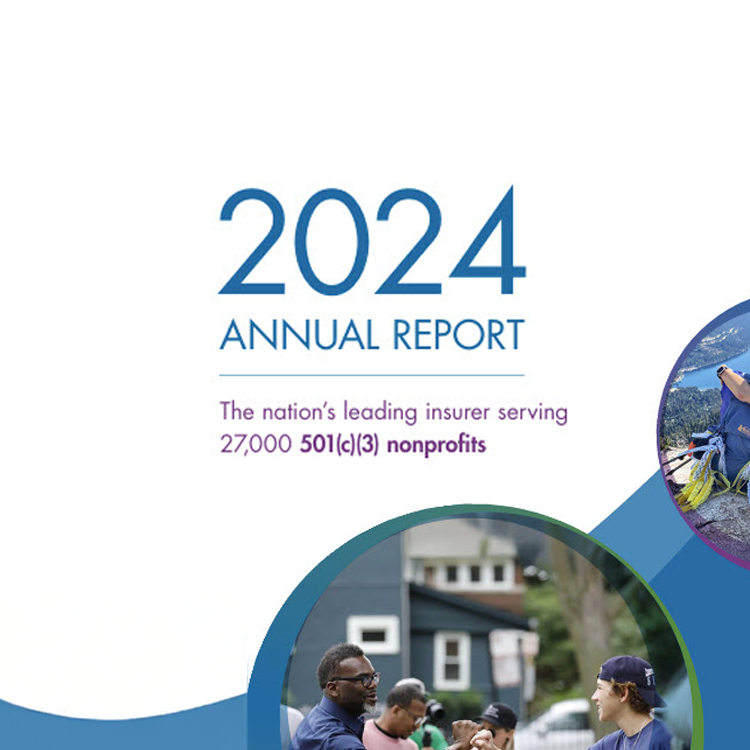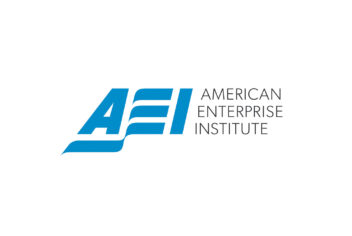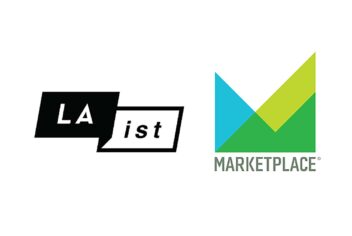Current NIA annual report.
Download a PDF version of the 2024 NIA Annual Report.

Audited financials.
For the current report year:
- 2024 Nonprofits Insurance Alliance (NIA) Audited Financials
- ANI 2024 Audited Financials
- NANI 2024 Audited Financials
- NIAC 2024 Audited Financials

Insured by NIA:
North Bay Children’s Center
Novato, CA
Start-up funding.
NIAC was founded in 1989 as a liability insurance pool, owned and operated by its nonprofit members. NIAC was originally capitalized with $1.3 million in loans from the following foundations:
- Ford Foundation
- Wallace Alexander Gerbode Foundation
- San Francisco Foundation
- Walter S. Johnson Foundation
- David & Lucile Packard Foundation
- Marin Community Foundation
ANI and an affiliate captive reinsurance company were capitalized with $10 million from two foundations. Each of the following foundations contributed a $5 million grant to the effort.
Dividend plans.
NIA is required to maintain financial resources at levels that meet the obligations made in insurance contracts with members. But NIA has the privilege of sharing better-than-expected financial outcomes whenever possible.
In it’s history, NIAC has declared $50 million in dividends for its nonprofit members in California. ANI is not yet of a sufficient size to begin paying dividends, but ANI members are already earning loyalty credits toward potential future dividends.
While it is not likely that every year will warrant a dividend, it is NIA’s pleasure to announce them when results are better than anticipated.
NIAC dividend plan.
While dividends are never guaranteed, NIAC has declared $50 million in dividends since 2007.
NIAC’s financial results vary depending on the claims experience of its members.
When financial results are better than expected, NIAC believes that it is in the best interests of its members to share this success with them.
Complete information about the plan:
ANI dividend plan.
ANI has grown at a much faster rate than NIAC during its first couple of decades, and has not generated excess capital/surplus to allow the payment of dividends.
However, at which time capital/surplus exceeds that required for solid financial operation, ANI believes that it is in the best interests of its members to outline how it proposes to share this success with them.
Complete information about the plan:
NIA’s Statement of Investment Beliefs.
We believe in a strong governance structure that includes an appointed Investment Committee with member-elected Board oversight.
We believe that regular and disciplined rebalancing between equity and fixed income plays a critical role in achieving long-term financial goals.
We believe that careful monitoring and management of investment-related costs is a critical component of investment oversight and directly contributes to long-term investment results.
We believe that carefully managing risk by setting investment parameters for asset allocation and guidelines for managers is a key aspect of preserving the real (inflation-adjusted) purchasing power of surplus assets while maximizing income and minimizing volatility.
We believe that considering investments that seek to make a positive environmental, social, and governance impact furthers and advances our mission to “provide a stable source of reasonably priced liability and property insurance” for our members and reflects the broad goals and objectives of our stakeholders: nonprofit organizations, employees, our natural environment, and the communities in which we live. We further believe efforts to minimize the carbon footprint for NIA and our investment portfolios, over time, aligns with this view.
We believe that organizations that embrace diversity, equity, inclusion and belonging initiatives are best poised to deliver superior services and results to stakeholders. This includes NIA as well as our investment managers and vendors.
Investment philosophy.
How NIA aligns its investment policies and practices with its commitment to social responsibility.
The overall financial objective for NIA organizations’ investment portfolios is to preserve the real (inflation-adjusted) purchasing power of assets while maximizing real income and minimizing volatility of principal value.
Real income is defined as the sum of dividends, interest, and realized gains/losses less the inflation rate as measured by CPI (Consumer Price Index) for the relevant time period.
Without jeopardizing its financial objective stated above, NIA invests 100% of assets, other than funds held in cash instruments, in a socially responsible manner, consistent with the social missions of our members and in a manner determined prudent by the board of directors.
We achieve this objective through a variety of investment options, including fixed income portfolios with socially responsible screens and/or environment, social and governance (ESG) strategies, and equity funds with ESG strategies.
As the socially responsible investment space is still evolving, NIA’s strategy is to both actively invest in funds based on positive social attributes as well as invest in funds that screen out investments with negative social attributes.
In general, we consider ESG to be an active strategy-seeking company demonstrating a commitment to environmental, social and governance best practices.
We consider social screening to be a form of avoiding investments of those which exhibit certain objectionable criteria.
These ESG and social screening strategies are equally applicable to equities and fixed income securities.
To accomplish our investment goals on behalf of members, NIA engages investment managers with a demonstrated record and well-documented process for evaluating and incorporating ESG criteria and/or social screening in its investment process.

Insured by NIA:
Phamaly Theatre Company
Denver, CO
ESG.
Equity and fixed income strategies that incorporate environmental, social and governance (ESG) metrics as part of a disciplined security selection process.
The intended outcome is for NIA’s ESG investments to emphasize companies that exhibit relatively strong metrics in these categories and/or demonstrate a company’s willingness and ability to improve in areas where needed.
We believe that incorporating ESG metrics not only reinforces important goals but also results in better long-term investments from a risk/reward standpoint.
Social screening.
In 2016, NIA divested of all investments in fossil fuels. Further, NIA investments qualifying as having a practice of screening out negative attributes use the following Morgan Stanley Capital International (MSCI) socially responsible screens:
- Defense and weapons: Based on revenue derived from the manufacture and retail of civilian firearms and ammunition, weapon systems, components, and support systems and services.
- Nuclear power: Based on revenue derived from nuclear power activities.
- Tobacco: Based on revenue derived from the licensing, manufacturing, distribution, or retail sales of tobacco products.
- ESG ratings: An indicator measuring company involvement in controversies related to land use and biodiversity, toxic spills and releases, energy and climate change, water management, operations non-hazardous waste, the environmental impact of products and service, and management of supply chain environmental impact.
- Labor practices: An indicator measuring company involvement in controversies related to a firm’s workforce diversity. Factors affecting this evaluation include, but are not limited to, a history of involvement in discrimination-related legal cases; widespread or egregious instances of discrimination on the basis of sex, race, or ethnicity; resistance to improved practices; and criticism by NGOs and/or other third-party observers.
Bylaws.
- View the ANI Bylaws
- View the NIAC Bylaws
AM Best rating.
All companies in Nonprofits Insurance Alliance® are rated A- (Excellent) by AM Best.
Reinsurance.
Nonprofits Insurance Alliance is reinsured by a group of highly rated reinsurers.
Latest headlines:
This article examines the rapidly unfolding liability insurance crisis threatening the US foster care system, where nearly 400,000 vulnerable children are at risk.
Making Insurance Accessible Again with Chris Reed
In this episode of the AACS Today podcast, Chris Reed discusses legislation that would make property insurance more accessible to nonprofits.
What’s next for foster families after an insurance shakeup threatens to upend thousands?
With most California foster family agencies (FFAs) in crisis due to a lack of insurance options, Los Angeles area FFAs fear agency closures and displacements may be imminent.




